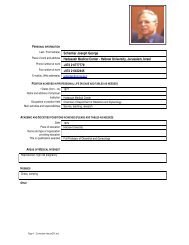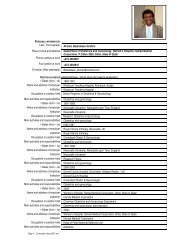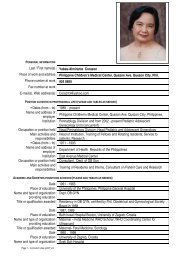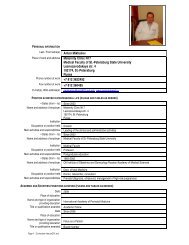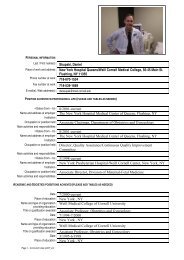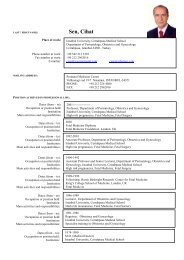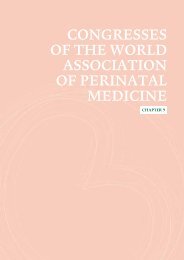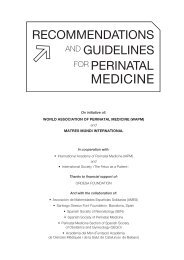Ian Donald School Book 09.indb - World Association of Perinatal ...
Ian Donald School Book 09.indb - World Association of Perinatal ...
Ian Donald School Book 09.indb - World Association of Perinatal ...
Create successful ePaper yourself
Turn your PDF publications into a flip-book with our unique Google optimized e-Paper software.
Chapter 1. PROF. IAN DONALD (1910-1987)True tissue differentiation was only to come many years later, especially with the development<strong>of</strong> grey scaling. Nevertheless, at this time in 1958 they could differentiatewith reasonable certainty between quite a variety <strong>of</strong> gynecological tumors and ascitesboth benign and malignant (the latter having a characteristically bizarre appearance)and, <strong>of</strong> course, gross obesity. They could also demonstrate fetal echoes in utero, particularlythe fetal head provided the uterus was enlarged above the level <strong>of</strong> the smyphysispubis.<strong>Donald</strong>’s team first went to press in The Lancet in 1958 and he regarded this as one<strong>of</strong> the most important papers he had ever written, noteworthy also because there had,so far, been no subsequent need to repeal anything he had then written.The automatic B scanner was completed in 1960 and <strong>Donald</strong> and his team were ableto identify and measure biparietal diameter accurately.The biparietal cephalometry had a remarkable development. The glimpses which theyobtained with a hand-held probe left insufficient time to measure the distancebetween the relevant blips from the parietal eminences on the cathode ray tube face.Accordingly, his colleague Tom Brown borrowed from his employers a two-channelgated flaw alarm unit which triggered a solenoid-operated polaroid camera from whosephotographs measurements could be accurately made. This was an ingenious devicewith which it was hoped to simplify biparietal cephalometry in the course <strong>of</strong> randomsearching in the region <strong>of</strong> the anterior fetal parietal bone. A physicist, TomDuggan, joined the team. He introduced electronic cursors consisting <strong>of</strong> bright-up dotswhich could be placed by knob manipulation on the leading edges <strong>of</strong> the blips andprovide a digital read-out <strong>of</strong> the distance between them. This proved even more accurateand saved money on photographic materials.Lecturing room an the <strong>Ian</strong> <strong>Donald</strong> <strong>School</strong> in Dubrovnik.11



